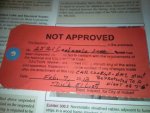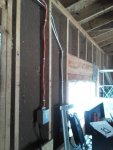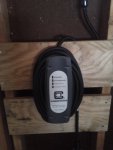spaarky1964
Member
- Location
- valparaiso in. porter county
I don"t type so well. I install residential charging stations for electric cars from volts to teslas. I installed a charger in an attached garage
in aresidential occupancy. the feed was a 310 wire nmc drilled through the center of the wall studs near the ceiling, then came down the c enter of the stud
in aresidential occupancy. the feed was a 310 wire nmc drilled through the center of the wall studs near the ceiling, then came down the c enter of the stud





